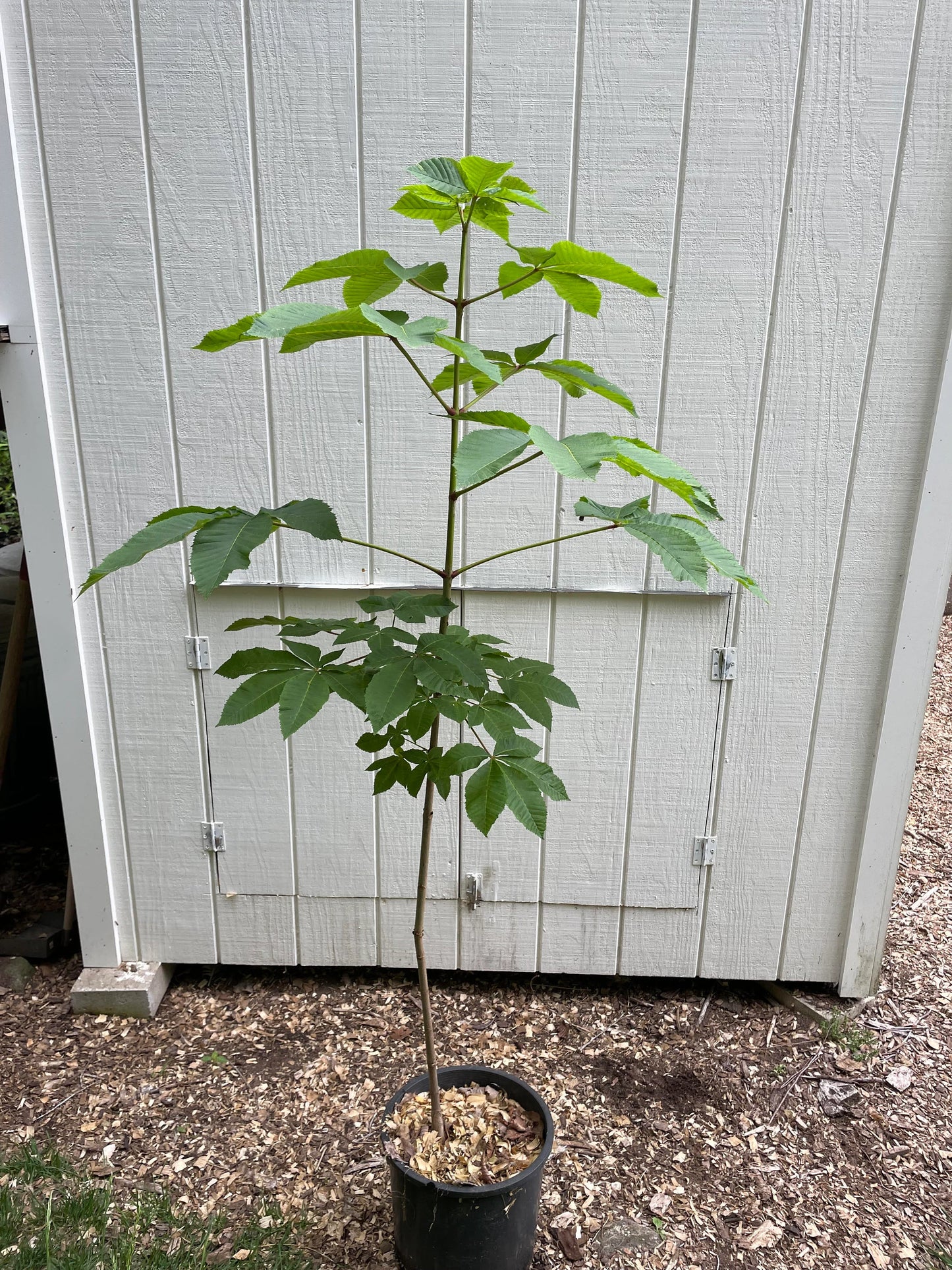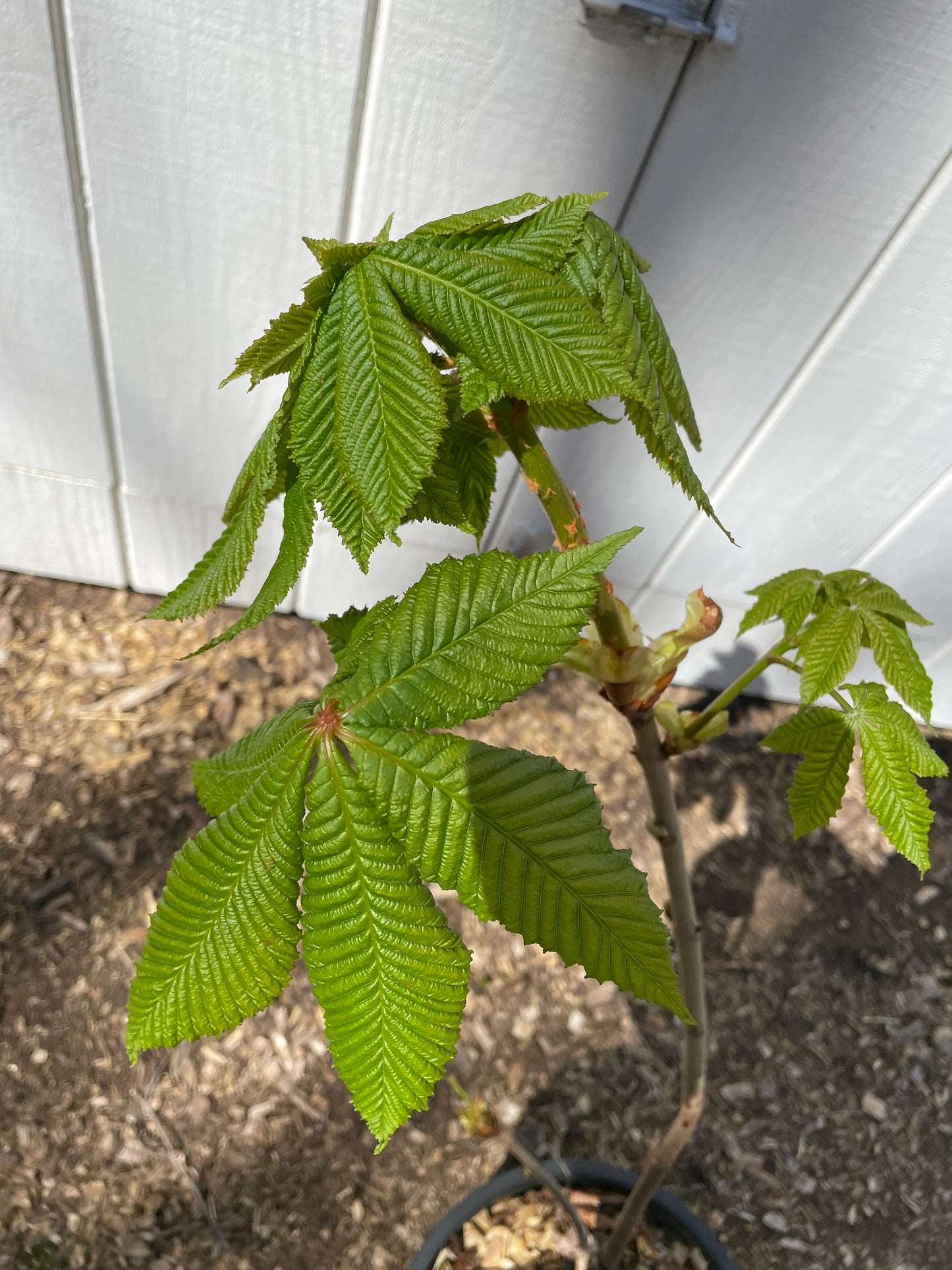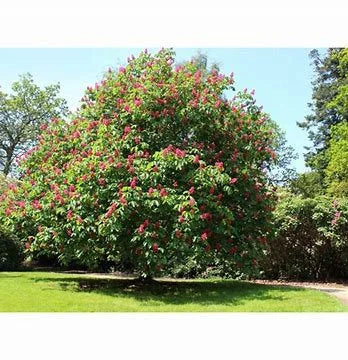Eastwoods Organics
Aesculus × carnea 'Briotii' Red Horse Chestnut Tree
Aesculus × carnea 'Briotii' Red Horse Chestnut Tree
Couldn't load pickup availability
DISCLAIMER - WE ADVISE THAT THE BEST TIME TO SHIP IS FROM OCTOBER TO MAY. SHIPPING OUTSIDE OF THAT TIME PERIOD CAN BE EXTREMELY STRESSFUL TO ANY LIVING PLANT. ON MOST OCCASIONS, PLANTS WILL SURVIVE THAT STRESS AND GO ON TO THRIVE. HOWEVER, OCCASIONALLY SOME WILL PERISH. WE DO NOT GUARANTEE TREES THAT WE DON’T PLANT, SO ONLINE SALES ARE AS IS. WE DO NOT SHIP TREES IN CONTAINERS/POTS AS TO AVOID EXCESSIVE SHIPPING CHARGES. WE SECURE TREE ROOTS IN LARGE PLASTIC BAGS PACKED WITH WET MEDIUM. IF YOU WISH TO SPECIFY A SHIP DATE, PLEASE INCLUDE A NOTE WITH YOUR ORDER. OTHER WISE IT WILL SHIP AS SOON AS WERE ABLE. WE DO NOT ACCEPT CANCELLATIONS ONCE AN ORDER IS PLACED. PLEASE KNOW WHAT YOU ARE ORDERING. SHIPPING TO ALASKA AND HAWAII IS EXTRA. OUR SHIPPING TIMEFRAME IS AN ESTIMATE NOT A GUARANTEE AS WE ARE AFFECTED BY WEATHER EVENTS, STAFFING ETC. We have 3-4' Red Horse Chestnut trees ready for sale. Aesculus × carnea, commonly called red horse chestnut, is the result of a cross between A. hippocastanum and A. pavia that was discovered in Europe in 1812. It is a small, oval to rounded, deciduous tree that grows 30-40’ tall, and is perhaps best noted for its attractive red flowers. It features dark green palmate compound leaves with 5 (less frequently 7) spreading ovate-oblong leaflets (6-10” long). Leaflets have doubly-toothed margins. Fall color is somewhat undistinguished. Very showy red flowers appear in upright terminal panicles (to 6-8” long) in mid-spring (May in St. Louis). Flowers are followed by slightly prickly husky capsules (1.5” diameter), each typically containing two or three nuts. Nuts are poisonous. Genus name is the Latin name for a kind of oak bearing edible acorns but applied by Linnaeus to this genus. Specific epithet means flesh-colored or deep pink. Briotii’ is a cultivar that was named in 1858 to honor Pierre Louis Briot, the nurseryman at Trianon-Versailles near Paris, France. In comparison to Aesculus x carnea, this cultivar is perhaps best noted for its darker red flowers and larger flower panicles. Dark red flowers appear in upright terminal panicles (to 8-10” long) in mid-spring (May in St. Louis). Flowers are followed by slightly prickly husky capsules (1.5” diameter), each typically containing two or three nuts. Will grow in zones 5-8. Thanks for looking
Share





